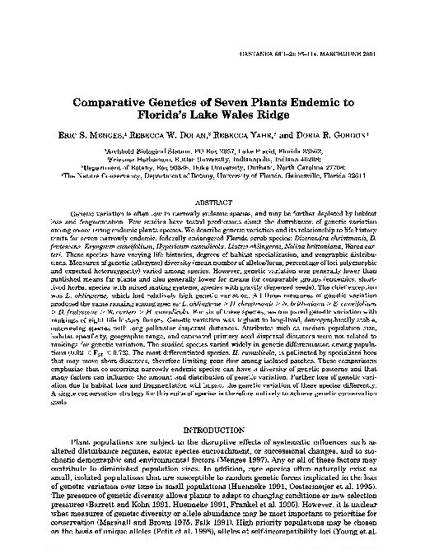
Here we submit that mathematical tools used in population viability analysis can be used in conjunction with floristic and faunistic surveys to predict changes in biogeographic range. We illustrate our point by summarizing the results of a demographic study of Lobelia boykinii. In this study we used deterministic and stochastic matrix models to estimate the growth rate and to predict the time to extinction for three populations growing in the Carolina bays. The stochastic model better discriminated among the fates of the three populations. It predicted extinction for two populations in the next 25 years but no extinction of the third population for at least 50 years. Probability of extinction is likely correlated with hydrologic regime and fire frequency of the bay in which a population is found. The stochastic model could be combined with information about the geographic distribution of L. boykinii habitats to predict short-term biogeographic change.
The version of record can be found through: Castanea.

This article was originally published in Castanea.